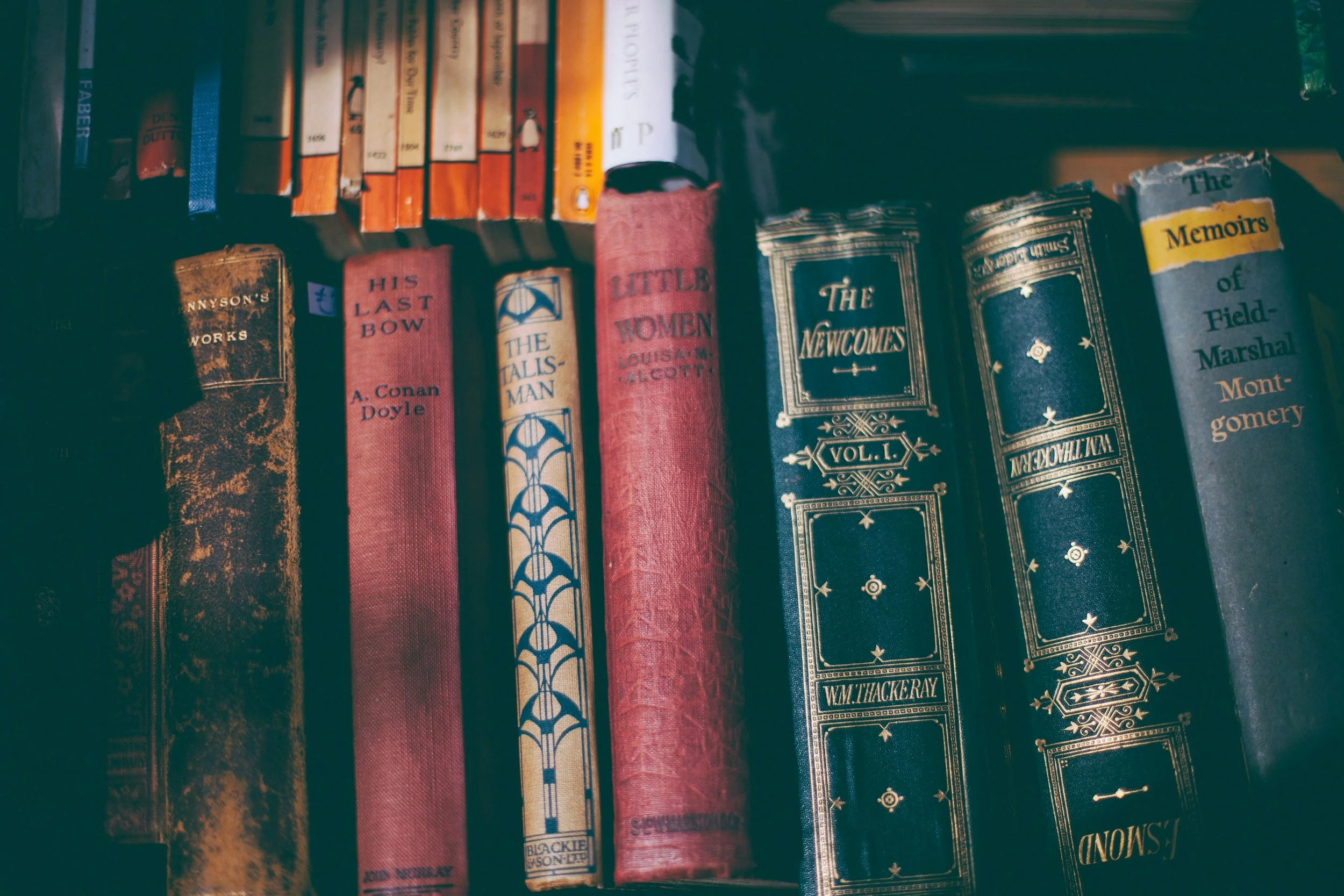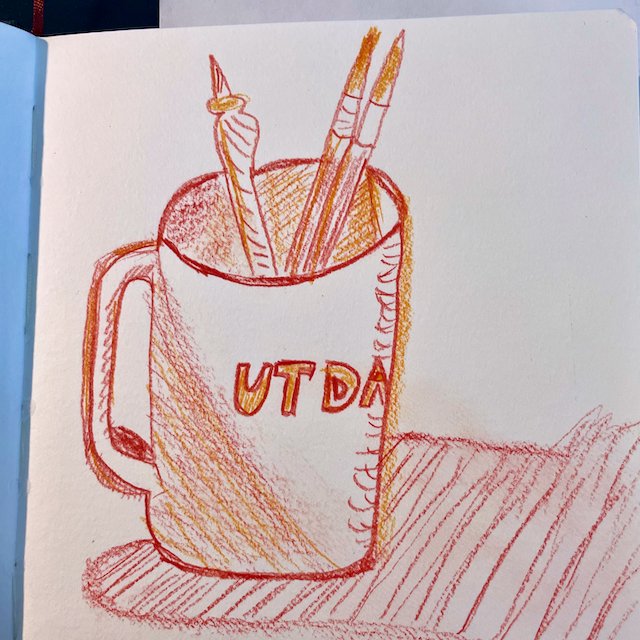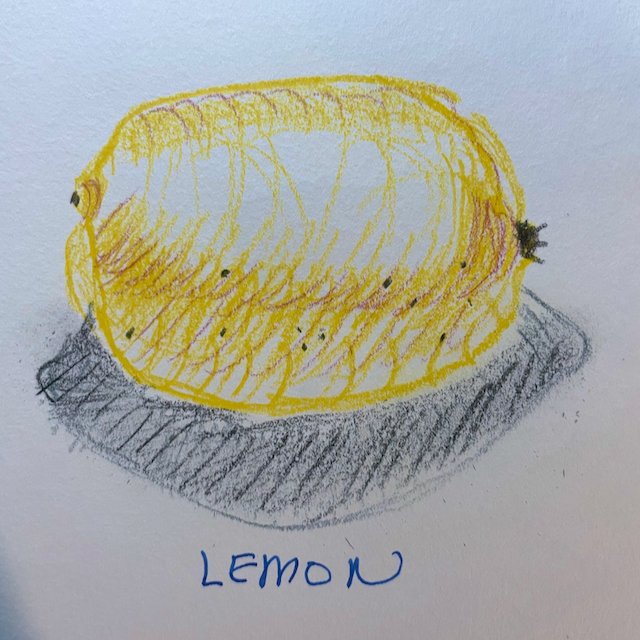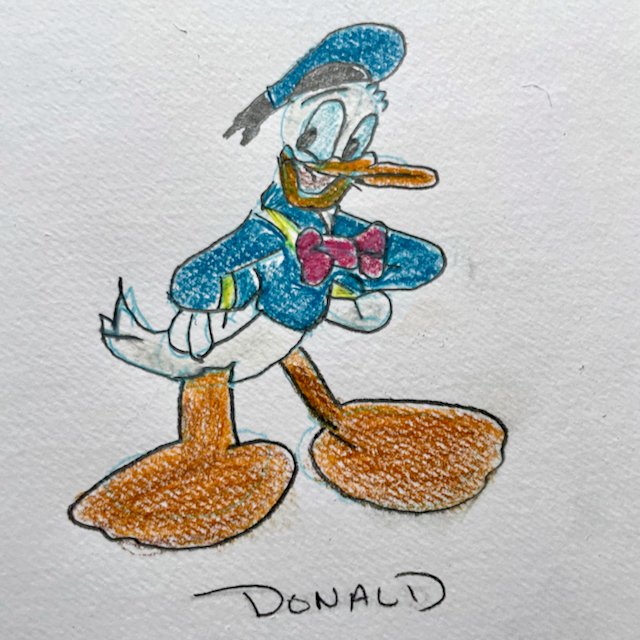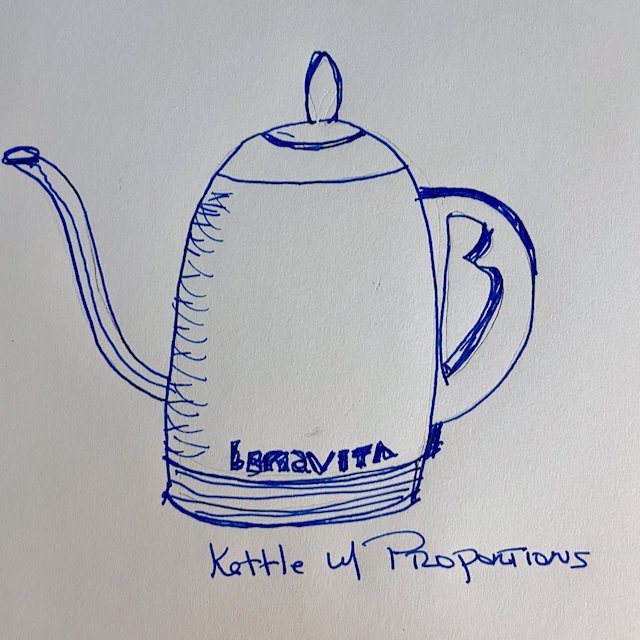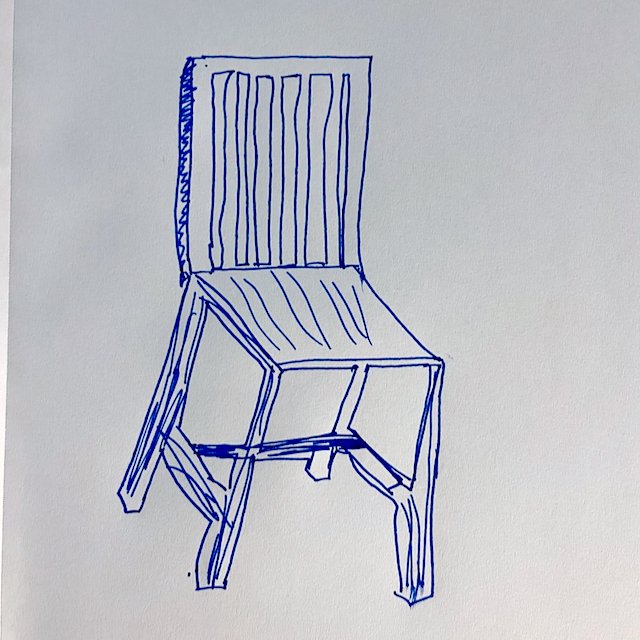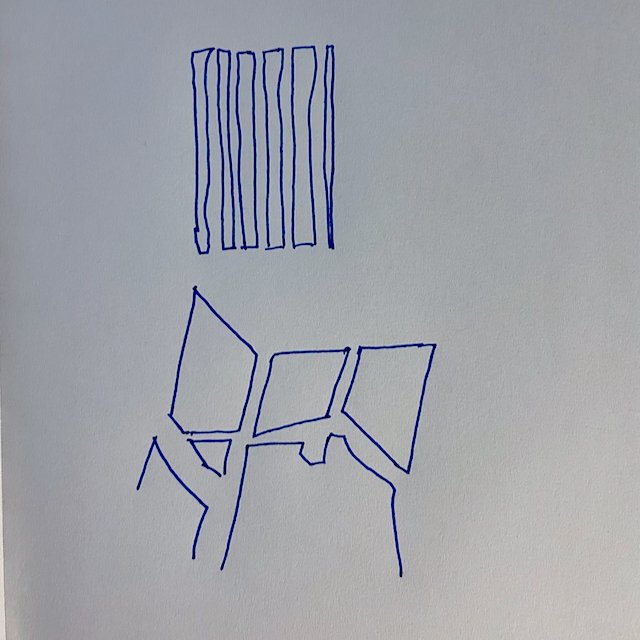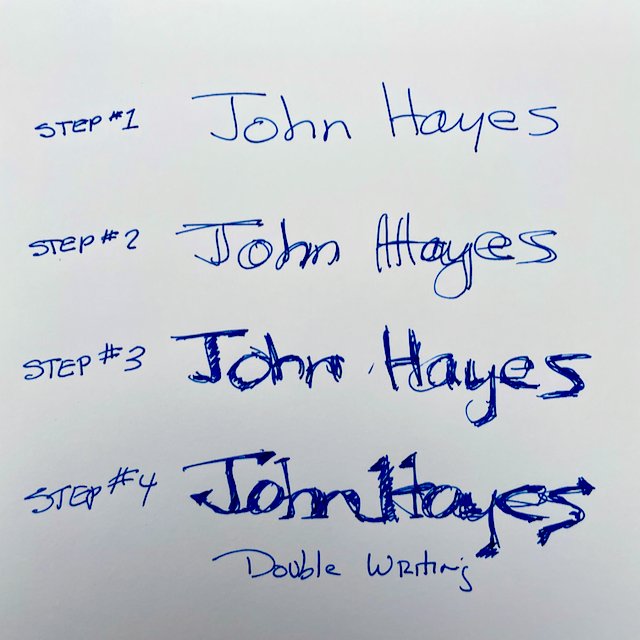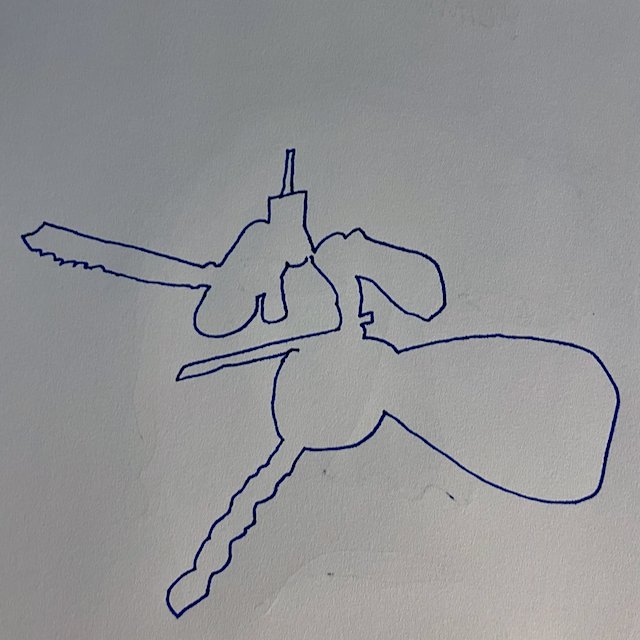From Reflection to Action: Your Retirement Review
Reviews, I think we all do them.
Some formally, others just in a moment of reflection. What if we treated our move towards retirement as a review? We have all come up with New Year's resolutions, other goals, and other aspirations. Essentially, we were reflecting on where we were, what we had or had not done, and what we wanted to improve.
What if we formally reviewed or reflected on our lives at retirement?
Why not? We have completed a phase of our lives, and I'm sure there are things we are so proud of and content with, and many that we want to experience, improve upon, or have regrets about. Well, let's spend some time and reflect on those.
This reflection will be valuable. I'm certain your full ambition for the next phase of your life isn't to sit around and watch TV. Also, I think we don't just want to be someone who travels for travel's sake. Dig deep.
Here are some categories to consider:
Relationships - how are my relationships doing now? Are they where I want them to be with my family? Were all my friends work-friends, and now I must supplement with a new set of friends? What will that look like
Value / Contribution - what do I value in my life? What gives me meaning or purpose? I'm not sure what that is. Daniel Pink had a great suggestion: Email 5 people you know and ask them:
What do you think I'm good at?
How do you think I'll leave my mark on the world?
You will be surprised and happy with what you hear back.
Physical —how am I physically? I now have more time, so what can I specifically do? Hey, I SHOULD work out—commit to doing something.
Experiences - what kind of experiences do I want to have? How can I prioritize experiences over things? Create a simple chart with 5-year increments and write down what you want to do in those 5 years. Please keep it out and keep it in your constant view.
Spiritual - how do you want to be spiritually? This will be enlightening.
Treating your retirement as a great opportunity to review and plan is fantastic.
This is not the end of your life, just a new phase. Grab it and go.
Commitment: The Bridge Between Intention and Achievement
We all want success. We admire it, chase it, and often measure ourselves against it. But success rarely shows up without its steady companion: commitment. Commitment is the force that pushes you forward when excitement fades, when results aren’t immediate, and when the price feels steep. The question is—what does it really mean to be committed, and how does that shape your version of success?
Success and commitment are good things, right? Many people say commitment drives success and that hard-charging people who are committed move towards success.
As Scott Adams put it in his book _How to Fail at Almost Everything_, you need to figure out the price for success and then pay the price. This does bring the notion of personal success and what the price is you are willing to pay. Just make sure success is defined on your terms, not society’s.
Brian Moran brings in the emotional side when he offers that commitment is when you bring in both the emotional and intellectual course of action. You must feel it, not just know it. You need a strong enough emotional why to stay committed—not just knowing you should. Everyone knows exercise is good for you and you should commit.
Jeff Goins, in _The Art of Work_, says you get clarity from action and commitment. Do you find out who you are through your commitments—what you commit to? Or is it because you commit to something that you see what you are made of?
Then there is the animal instinct of just push: commit to doing 10 repetitions of the thing. No matter what, get 10 reps done. Is this enough of a tiny experiment to get you enough information to see if it is worth it?
On an emotional level, is commitment a promise to yourself? Can you keep promises to yourself? Brian Moran offers this up in his book _The 12 Week Year Field Guide_. Can you keep these promises? What does this say about your ability to remain consistent and committed? Should you?
Darrin Donnelly, in his book _Think Like a Warrior_, brings a bit of Stoic philosophy into commitment by offering that you should only commit to things you have total control over. This has merit, as it is hard to commit to something where you are relying on others for your success or fate.
This ties into the book _The Gap and the Gain_ by Hardy and Sullivan, where they talk about internal vs. external comparisons. Success, and the commitment to it, come from focusing on internal comparisons vs. external—commit and remain committed to improving yourself, against yourself. You control this.
Goins also offers that successful people don’t succeed despite failure but rather as a result. Is failure—or perceived failure—the result of lack of commitment? If you are committed and act on that commitment, then you will have success, be it information to see if what you are doing works for you.
Finally, Hugh Culver on _HughCulver.com_ offers a simple thought: success comes from doing the work. Just be consistent.
### The Takeaway
Commitment is the bridge between intention and achievement. It’s the promise you make to yourself and the follow-through that proves you mean it. Success isn’t about never failing—it’s about staying in the game long enough, and consistently enough, to discover what works for you. Define success on your terms, commit with both heart and mind, and then simply do the work. The rest follows.
Consistency leads to so many good things
Consistency doesn’t mean—nor should it be equated with—perfection. Consistency is aligned with improvement. Don’t turn it into perfection; focus on trying to improve. There’s no need to beat yourself up over a missed day or action—get back on the horse.
As Joel Runyan puts it: _Never miss two days in a row._ He’s not advocating perfection—just don’t become inconsistent. Similarly, Ryan Holiday, in his _Daily Stoic_ newsletter, encourages us to pursue improvement, not perfection.
Admiral William H. McRaven equates consistency with self-discipline and broader change: _“Small acts of discipline practiced each day develop self-discipline. It’s your self-discipline that will enable you to change the world.”_
Like Admiral McRaven, Grant Cardone believes consistent, disciplined action is the most significant determining factor for success. The ability to work at something consistently will lead you toward a successful outcome more reliably than any other path. That “successful outcome” might simply be discovering that what you’re doing isn’t delivering the desired results—but at least you’ll _know_.
Consistency is evident in successful leaders. As Ron Chernow points out, George Washington embodied this: _“Once Washington had set his sights on independence, his vision was unblinking, and his consistency proved one of his most compelling qualities.”_ His decision, coupled with focus, drove him to a successful end. His team knew precisely what was expected and measured everything against one standard: independence.
Successful leaders are also consistent in how they handle praise and criticism. Consistent leadership gives your team the comfort of knowing what you expect and how you’ll communicate areas for improvement. It makes you less likely to “fly off the handle”—unless you do _that_ consistently.
It’s rarely a single action that drives success, but rather the repeated act—the consistency—that provides the data and feedback you need. I’ve written about _tiny experiments_: the key to a successful tiny experiment is doing _X_ for a set period. The success lies in the information you gather, not necessarily in whether the experiment “worked.”
I’ll leave you with a quote from legendary NFL coach Bill Walsh: _“Even in the worst circumstances, do not unravel mentally or emotionally. Continue to fight and execute well. Even if the cause appears to be lost, act like professionals.”_
You control consistency—it’s all on you.
Why I Was Wrong About Fiction
I was all about productivity and non-fiction books that could help me do things faster, better, and more efficiently. I completely disregarded fiction books. Was I wrong?
I started watching a couple of YouTube channels that focused on fiction: The Read Well Podcast, A Novel Review Podcast, and the Reading This Life YouTube channels. I'm now really enjoying fiction.
Reading these books now, I see how you can learn and develop yourself through them. I think fiction books are more introspective, not hitting you in the face like non-fiction. There is no "here are the 10 steps to email freedom" or "here is how you design your morning routine," but more intellectual.
I find myself relating to the characters, feeling with them as the protagonist works through their issues, and thinking about how I can do the same thing or what I would do in that situation. Is there a bit of me in so-and-so? Wonderful. And this is all wrapped up in a great plot line.
I also enjoy the just-for-fun murder mystery novel. I can relate to the characters, and that builds my anticipation for "whodunit!" I'm not thinking about those novels as I drive; I'm just enjoying them.
I react more intellectually or emotionally to fiction, whereas my reaction to non-fiction is more methodical and structured. I highlight the books, decide on to-dos from them, and file them away in Obsidian or my card zettelkasten. Even the art books I read are more about gleaning a few key takeaways that I can use. They are productive to read, but I don't have an emotional attachment to them.
Even historical biographies give me a different level of reading experience. I can relate—or not relate—to the subject. I'm either pulling for them or rooting against them. A little bit of emotional attachment to them.
Read Fiction - Really read the books and understand what the protagonists are going through and the underlying themes or ideas. You will take away more than you think.
Intentional Living, Joy, and Reflection
Today's conversation is about relaxing, which is part of life and can be part of your retirement. It's funny how each day, I set one key objective or thing that needs to be done. And some days, it is to Enjoy the Day. But I think it gives me intentionality and reminds me that relaxing, enjoying the day, and staying in the moment are just as important.
Do what you need to do to balance your life. I have gotten down to having three weekly key items and then just one per day. What is the key item for today? It may be art, publishing this, or just relaxing.
There is nothing I have to do that is critical to my life. Do my wife and I want to do something else or spend time together? That is more important than cleaning the garage.
Challenges vs. relaxing—I need challenges in my life. Is it a good thing to turn a regular hobby into a challenge? I think within my personality is the desire to constantly improve. That desire for improvement can be good and evil. I want to enjoy dancing, and now, it is becoming a comparison with others.
Hey John, continue to enjoy. Do it for the enjoyment—not the comparisons or one-upmanship.
Let me know down in the comments if this conversation resonates with you.
Redefining Identity and Intentional Living in Retirement
What is your identity? How will that change when you retire? Jody Rollins discusses this and 16 other things that vanish when you retire in a great video on the non-financial considerations (17 things that Vanish after Retiring) in your first few years of retirement. Jody Rollins and her husband host the Retirement Transformed YouTube channel. Jody hits it right on the head - emotional, identity, and human interaction aspects of your life change in retirement. You can say it won't for you, but at least some of the 17 areas Jody hits on will impact you.
Knowing these areas will allow you to anticipate or at least plan for them. I've talked about this, but having friends outside of work is key. The people still working after you retire have much more structure and stuff going on in their lives than you do. They go on with their work lives once you are gone. I also suspect much of what you discussed with them was work-related. If you are still working, try to jot down the subjects of your conversations with your work friends. You'll be surprised at how many are actually about work-related topics. When you leave, those topics will gradually dry up as new people join; they have new challenges you don't know about.
Another area the Retirement Transformed channel hits on is separating your identity from your job. You are not an Executive; you are a person who has an executive role. You are a grandfather, grandmother, Mother, spouse, partner, etc., but not just an Accountant. What will you say, "I used to be a VP of Finance"? Okay, cool. So, will you be a used-to-be for the next twenty-five or thirty years? You didn't say I used to be a college student for the last thirty years. What are you doing now?
You have a different role now—you are a retired (Current Job). But you add value, offer friendship and support, and are so much more than an accountant. Embrace what you are now and what you offer, contribute, and experience.
Be intentional about how you want to define your next thirty years. This will give you value, purpose, and an identity. You are awesome, and the world needs to see that. You are so much more than you Used to Be.
Does this conversation resonate with you? Let us know in the comments below.
A Conversation on Intentional Time Use and Personal Structure in Retirement
What is my retirement going to look like? I'm excited about making more time available for tennis, art, and dancing. The ability to spread out my tennis to more than just evenings and weekends is fantastic. Currently, my weekends aren't my own to relax and do as I please, as I have tennis commitments. Which is odd as I solely control when my tennis is scheduled. That is 100% on me. So don't think I can't do what I want.
Do we think that way about other things? Even though we think we don't control it, aren't they just commitments that we've signed up for? No one else is responsible for what we say yes to. Just us. And are they things that we enjoy doing?
Flexibility will be the key and the bane of my retirement. The ability to have less structure will be good and a challenge for me. I love structure, so I'll just need to craft a different kind of structure. Will my time-blocking work satisfy my organization's desires?
Currently, as part of my weekly planning session on Sunday, I block out and schedule time to work on my weekly key three. I block out time for exercise, tennis, art, reading, and home projects. Also, having breaks between time blocks will be good.
Will scheduled time blocks be enough of a pull for me now? Will I respect the time blocks? More importantly, what can I do to build rigor and a "stick" into the blocks? I need to appreciate the fact that I have limited time left, and this is a way to live intentionally. Perhaps the focus is on living intentionally, and this is just one of the tools to achieve that.
I'm not focused on time blocking—I'm focused on USING time blocking to live intentionally.
I may intentionally choose to relax in the pool, but that is a choice, not my default position. This will be good. I also view retirement as a reward for all the hard work I have put in. A bit of a reward and an opportunity to spend more time on what I enjoy and love, as well as explore new experiences and activities. The ability to revisit old interests will be fantastic. There is a lot to do, including seeing my kids, grandkids, and in-laws. I have a lot of time on my hands to get after it. Art will be a great release and quiet activity.
Schedules – I don't want to go overboard. I'm a guy who loves schedules, time, spreadsheets, plans, and details. I love details. Vacation is enjoyable for me when everything is scheduled, and I'm doing something. I don't consider relaxing on the beach doing something.
Do I need to push myself to consider sitting on the beach doing something? Something productive? The fact I'm worrying about something being productive is a problem. Relaxing, spending time contemplating, and sitting with my wife on the ocean side is something. I'm doing something. I'm letting my mind and body recover and relax.
I have started identifying one action or task that must be done daily. Now, I am intentional about what I do. And it can be "enjoy the day with my family." Funny how I need to write that down! Do what you need to do to reduce unnecessary anxiety.
Does this conversation resonate with you? Do you have similar conversations? Let us know in the comments below.
Ending the Career Chapter with Purpose and Clarity
I am struggling with ending my work career and how much I should be doing? Not just what I need to do to satisfy what work wants but what I want to do to leave feeling good. Work is nearing completion. I'm coming down to the home stretch. Here is how I'm trying to handle it.
Getting some clarity on my deliverables for any projects at work is key. I'm grateful to be in a position where I can dictate when I leave. For me, I'm tied to a key company project, so I'm able to have a crisp end. But I'm ready.
I am trying not to get caught up in the "Hey, we need you" or "How about staying to do this." I'm susceptible to that dopamine hit from being recognized and wanted. I fall for that, and a lot of us do as well.
I recently read Sahil Bloom's book, "The 5 Types of Wealth." I've taken a stab at defining my Life's Razor. Your Life Razor is a clear thought/statement that describes your focus and, to some degree, your values that you can use to evaluate alternatives. I am a person who values my family, my mental and physical health, and new experiences. Would staying longer in this job align with that?
My first commitment is to myself and my family. Not the Company. Keep that in mind, and it will be easier to decline any of the opportunities. I've committed to delivering on what I said, and then I can leave with my head high. I know people will say, 'Hey, you don't owe them anything,' but I can do this. I don't hate my job, so for me this allows me to leave stress-free. No what-ifs...
For me, even when I switched jobs and companies, I had a sense of leaving the Company in a better place. I'm trying to do the same now, but it seems different since I'm retiring. I can still control what I commit to, how I react, and how I deliver.
Remember, you are in control of what you deliver in these last few months and will follow through. I can feel good that the Company got their worth from me until the end, and you can do the same. That doesn't need to, nor should it impact how you respond. Remain focused on the deliverables, not a specific date. You can bring it to the end without any guilt or angst.
From Melancholy to Momentum: Embracing Intentional Retirement
Why is it that I’m thinking about retirement as a daunting 30-year block when I never thought about my work life as a 40-year block?
Why is there such a stark difference in how we view those timeframes?
Why shouldn’t I approach the next five years of retirement the same way I approached my first job—one step at a time?
Instead of sitting in melancholy, I’m choosing to embrace intentionality.
Back in college, my goals were simple: get a job, pass the CPA exam, and see what came next. That took care of my first three years out of school. I didn’t obsess over what I’d be doing for the next 40 years—it would’ve been overwhelming, and frankly, I had no idea what the future held.
Retirement should be the same. What will I do in the first five years? I’ll try out retirement. I’ll refine my health routines, learn how I want my days to unfold, and make time to have fun. I might continue with what I’m doing now or I might completely change it up. Either way, I’ll learn, adjust, and keep moving forward with intention.
One book that supports this mindset is Tiny Experiments by Anne-Laure Le Cunff. Her premise is simple but powerful: treat your life like a lab. Run small, personal experiments to figure out what works for you. Don’t just copy what’s worked for others.
Choose something you want to try. Define what success looks like. Do it for a set time say, 30 days. Then reflect: Did it move you forward? Was it worth continuing? Whether it “works” or not, you’ll gain insight and clarity.
Maybe your experiment tells you to stop. Maybe it tells you to pivot. Or maybe it says, “This is working keep going.” All three are wins.
You don’t need to overhaul your life or commit to massive routines. Start small. Test. Learn. Adjust. It’s a more effective and sustainable approach than New Year’s resolutions.
Living with intentionality isn’t about constraint. It’s about freedom. You’re consciously choosing what matters most to you.
Want to relax by the pool for an hour a day? Great. Make that your tiny experiment: “I’ll sit by the pool for an hour a day for 30 days and track how it affects my stress.” You may love it. Or maybe you’ll realize by day 20 that you’re too fidgety and that’s valuable insight, too.
So don’t think of retirement, or life in 30-year or 40-year blocks. Think in chapters. Experiments. Intentional steps forward.
Your next chapter is just a tiny experiment away.
Retirement Anxiety
Does panic or anxiety kick in when you have a retirement date set—and you know this is it?
I’m starting to feel a bit of that. I’ve wanted to retire for some time, and now it's getting to the point where I have a date. As I get closer, I’m feeling some anxiety. There’s that dopamine rush for me—“Hey, I’m getting close to retirement!”—and then, once I started setting a date, the anxiety kicked in.
So what’s driving the anxiety?
Am I worried about the finality of the decision?
Is it the loss of income?
Is it the loss of identity tied to my VP status?
Now I go from VP to Retiree? Is that the issue?
Do I have enough money?
Do I know what I’m going to do with the next 25–30 years of my life?
Will I be able to do something meaningful with all the unstructured days ahead?
It really isn’t final. I can find additional part-time work if needed. I can replace some of my income through other sources—part-time jobs, online revenue, day trading, etc. There are a lot of options. I can ease the transition in many ways.
Initially, I’ll focus on the short- and mid-term timeline. When I started my career after college, I didn’t stress about what jobs, companies, income levels, or locations I’d experience over my entire career. I focused on getting my first job in public accounting with Deloitte. Once I was fortunate enough to land that job, my focus for the first two years was making sure I passed the CPA exam.
I had a plan—and the short- to medium-term nature of that plan kept me focused. I made measured progress. I felt like I was in control of my life.
Yes, we had the grind of busy season, and I had to transition from college life to professional life, but I did have control. I controlled when I went out with friends, how I stayed in shape, and how and when I studied for the CPA exam. All were actions and situations I could control. I need to do the same with retirement.
Is it just a general aversion to change? But why am I so anxious about it? Everything is changing—this is no different from when I moved cities, took another job, or got divorced and remarried. There has been so much change in my life, and this is just another experience of change. Nothing bigger or smaller.
We have no big plans in terms of moving or significant lifestyle changes, which will help me transition to full days off. After that, my wife and I can plan a bit more for the mid-term and long-term.
I can bring on the change and embrace it. I’m grateful that I _can_ retire—that I’m financially able to retire and have my health to enjoy it. Some people don’t have either. Some must work; others are forced into retirement. Fortunately, I’m not in either of those positions.
I have the opportunity to replace my finance job with lecturing at the local university. The challenges are there, both intellectually and organizationally. The lectures, grading, counseling, and guidance—these are all things I’ve done and now get to do with a different set of people.
So, how do I rock this retirement decision?
How do I do what’s good for _me_ and not just what’s good for my company?
They’ll move on without me. They’ll be just fine. No one is irreplaceable.
I can bring on the enjoyment and the challenge of retirement like I’ve faced all the other challenges—with ease, calm, and enjoyment.
Like I tell myself every day:
Start with calm. And move into ease and enjoyment.
Let the anxiety exist without judgment.
It means I care.
It means this matters.
Retirement starts 2 years before you stop working
A successful retirement starts two years before you plan to move into retirement. Here are ten focus areas for a transition into retirement.
As of the publication of this post, I am about five months from transitioning into retirement.
Only one area focuses on finances. Yes, you need to get your finances in order, and I recommend an advisor to help you with that portion of retirement.
These ten reasons revolve around what I call the retirement triangle: mind, Body, and Purpose. For me, a successful retirement revolves around three areas: purpose, Mind, and Body—my Retirement Triangle.
1. Get your finances tuned up - Let's get it out of the way first. Hopefully, you have been working with a Fiduciary, fee-based financial advisor. And you have been updating your lifestyle goals and the finances needed to support your ideal lifestyle. Ensure you fine-tune your plans and communicate openly with your advisor on timelines, available work benefits, and spending assumptions. Get your finances lined up. Two years out is the time to refine and firm up your plans.
For me, this included how much cash I wanted on hand (I wanted to be insulated from any risk of a sequence of returns).
Related to finance, I found Bill Perkins's book Die with Zero a great resource for challenging the societal assumptions around retirement savings and spending. Die with Zero provides a counterintuitive approach to retirement finances. It is worth a read.
2. Need to start transitioning away from the structure of work. Work provides us with a daily structure. Regardless of shift, we typically spend most of our day working. When you retire, you will not have work to structure your day. This unstructured time may be a challenge for you.
The mistake when you retire is thinking, "I have all the time in the world now." For me, that will not work. I need structure. Even on the weekends, the days get away from me, and I don't accomplish everything I need or want. If you are honest with yourself, you'll agree that you need to accomplish more than watching TV, endless scrolling, or napping. You may say you want that and are looking forward to it, but after a month or two, that will not work.
Now is the time to start transitioning to structuring your day when work is unavailable. How do you plan on spending your day? How will you block out time to workout, socialize, spend time on your hobbies? Start planning that now. Will you have a morning routine?
With the current work shortage, depending on your current job, you may be able to leverage your career capital to start transitioning. Maybe you can work part-time or reduce your workload. This can give you a chance to work on structuring this additional free time. Start figuring out how much structure you need and how you will achieve this structure.
3. Focus on solidifying your social network. You need friends and social interaction outside of your work friends and that environment. When you leave your job/career, you will lose touch with most of your work friends. It happens. How much have you kept in touch with work friends who have already retired or left for other jobs? Exactly, not as much as you thought.
Work friends and the times you would catch up at work will be gone. Start focusing on developing and nurturing your social friends. Some of your friends may already be retired, or you already spend time with them outside of work hours.
4. Communicate, Communicate, Communicate. Retirement is not solely a personal decision if you have a partner, spouse, or significant other. Make sure everyone understands what your retirement means. Do you still work part-time? Is the expectation that they also retire? Do they need to keep working? Can they retire? If you plan on traveling, how will that work if your partner still works? See point 2. If you are both going to stop working, then there will be two people who had work schedules now home, potentially together, all the time! Man, you must be ready to handle that, both of you.
5. Refine or redefine your purpose. Why are you here? How do you contribute to the greater community and world? The purpose is a key leg of my retirement triangle. Your life's purpose doesn't end when your career/job ends. Your purpose is more significant than any job. Now, you will have more time to deliver on your purpose. Purpose gives you a reason to get up in the morning and gives you structure, challenges, and a life's reason.
6. Define what you want retirement to look like and then work back from that vision. Cal Newport calls it Life style Centric Planning. Start with the end in mind: where you want to live, what you want to do with your time, and what you want to contribute. Synthesize all this into a defined lifestyle. Now, you can measure your finances, purpose, and current lifestyle against this ideal. You have something concrete to work towards. You work towards not a singular goal but a series of milestones and actions.
Remember, just because it is a great vacation spot may not be an excellent residence location.
7. What hobbies are you going to continue or start? Now is the time to think about it. You have so many options. Some are active for your body, and some challenge your mind.
Start a YouTube
Start a Blog
Art
Musical Instrument
Photography
Golf
Hiking
Camping
Climbing
Cycling
Triathlon
Swimming
Running
skiing
Consider combining a love and desire to travel with your hobbies.
It's a great time to see if you have the gear, training, and access to these hobbies. Can you afford the hobby with your current financial position, or are there changes and prioritizations you can make to ensure you can afford these hobbies?
8. If you have kids or relatives. You need to start thinking about the impact of having kids, grandkids, or even parents on the lifestyle you want.
The decisions you make around this key attribute will impact where you live and how you spend your time. Do you want to be able to see all your grandkids events? Do you have elderly parents for whom you are the caregiver? All things to consider.
Do you want to have access to close, quality health care? That will have a significant bearing on where you decide to live. Does your financial plan incorporate these desires and plans?
9. Think about what you want your exercise activities to be. You have heard it before, but your health is your most important retirement asset. Give some thought to what you want to do in retirement. Do you have current physical activities that you can continue and expand, or are there other activities you want to take up with all your additional time and flexibility? Consider the necessary equipment, supplies, time, and locations for these activities.
10. Be intentional. What are you going to do? Don't let retirement happen; you do retirement. If you are reading this, then I suspect you want to be intentional about your retirement.
What type of retiree are you going to be? It is similar to the person you are now. Do you need clarity about what you will do and how you will do things? Can you enjoy more flexibility in your life? Can you enjoy that much flexibility? Can you do things solo, or do you need someone to do everything with? You will be around your significant other almost all the time; keep that in mind.
Bonus Tip - If you have a home, get a professional home inspection. A professional home inspection is a great way to identify repairs needed to your home. Any significant hidden expenses that you are not aware of. Also, please don't wait until you are going to sell your home to get it in great shape. Spend the money now to enjoy your home to its fullest while preserving its value.
Summary
Around two years out is a great time to consider these facets of the Retirement Triangle—things to consider as you make the next big life transition.
Practice Needs a Purpose
Practicing drawing needs a purpose. Likewise, practicing football, baseball, and the violin requires a purpose. So before you start any practice, you need to be clear on your purpose.
Purpose lets you experience total satisfaction. When you know what you are practicing for, you have clarity when you are done that you either achieved the objective or understand what you need to do next time to complete your purpose. Either way, you get feedback.
Today's drawing focused on using colors on the same side of the color wheel to create a sketch.
Not using the "actual" colors of the object but just picking two colors to draw. I achieved that objective. This drill will allow me to think beyond the object's color and more toward a fun, exciting color pallet.
What is your purpose for doing something today?
Lemon
Colored pencils again today.
I used yellow and the complementary color purple to give the lemon structure and highlights. With the light coming from above, the highlights are strong on the top and cast a strong shadow.
Progressing
I was hesitant to draw today. I had the pressure and negative energy of failure. I was procrastinating because my drawing wouldn’t be good and would frustrate me. The opposite happened; I am one drawing closer to improving my skills. 1% improvement daily. I will improve my drawing by drawing.
What do you want to improve, but you are generating friction and procrastination?
Donald Duck
Today I drew Donald Duck.
If you follow my Instagram feed JDHayes50, you know I’ve been on a Disney Character kick. It started when we were done at Disney’s Food and Wine Festival, and the Tropical Storm came through. My wife and I were at Disney Springs and came across Learn to Draw Disney Celebrated Characters Collection book. I picked it up, thinking we would be quarantined in our room for a while.
I am enjoying the step-by-step tutorials.
A rookie question, but the step-by-step tutorial has overall shapes you draw and then refine down to the detail. So how do you remove the general shape lines to get to the final drawing? I’ve tried erasing it, but the overall shape gets out of whack.
I hope you enjoy this.
Water Kettle with Proportions
There are techniques to help with drawing subjects in proportion. Using your pen/pencil at eye level is a method to help determine ratios. For example, I used my pen to line up the kettle's total height, the spout's height, and how far the handle extends from the body.
This drawing seems to be in proportion and resembles the real thing.
Manager Vinylmation
Today’s drawing was fun. Using two pen sizes, I created my interpretation of the Manager Vinylmation. It was fantastic to free-hand the Vinylmation’s contours and then use the fountain pen to add the details.
Mix it up as you work on your drawing and art skills.
Challenge yourself and take advantage of all the tools you have
Chair – Negative Space
When you have a complicated subject to sketch, an effective technique is to draw the negative space. You focus on the open spaces and draw those rather than the intricate details of the subject—an effective way to draw on the right side of your brain and to trick your left side.
Today’s chair drawing was completed using this technique. Not perfect, as I still got caught up in the left side of my brain “telling me” what I saw. The chair leans, but I am getting better at showing perspective.
1% improvement every day.
Double Writing
Hey, my handwriting is a mess, sometimes unreadable and boring. Today’s Sketchbook Skool Art Bootcamp exercise is Double Writing from Andrea Joseph. Double writing is easy to add fun and flair to your lettering. She walks you through a four-step process to practice double writing.
Contour of the Keys
A contour drawing focuses on the edges of the object. Today’s exercise was to draw the contour of your keys without lifting your pen. The focus is on developing confident lines.
Doing it in pen, in this case, a Pilot Prera fountain pen) allows me to focus on the lines; there is no erasing or “starting over.”
After I set the contours, I went back and added the details. Excellent enjoyable exercise to start a Saturday morning.
Blind Contour by Feel
Today’s exercise was a blind contour by feel selfie. You place your finger on your nose, move around your face, and have your hand follow along. I like how my eyes are aligned and feel confident with my lines.
Another interesting exercise to develop confidence in my lines.




